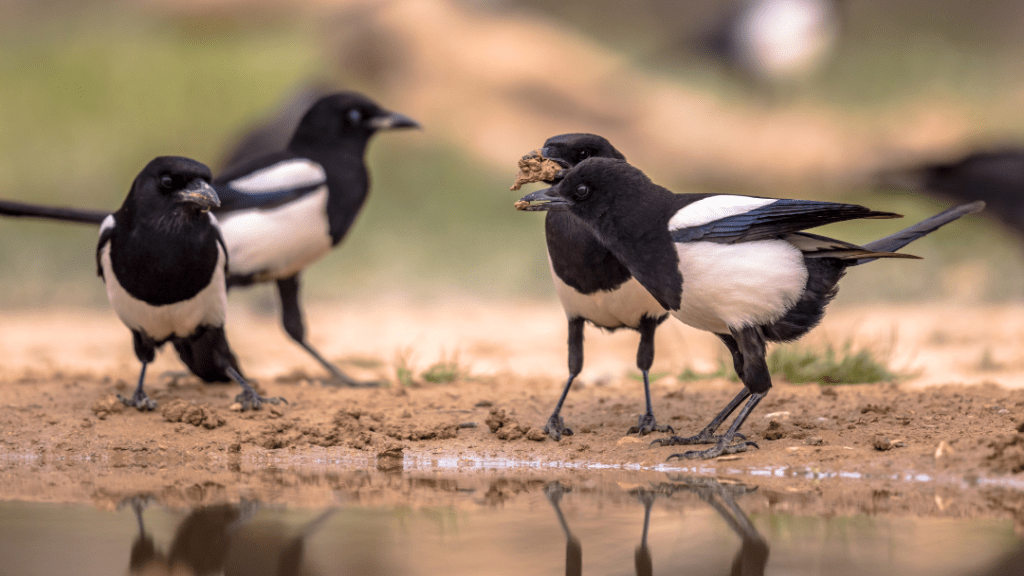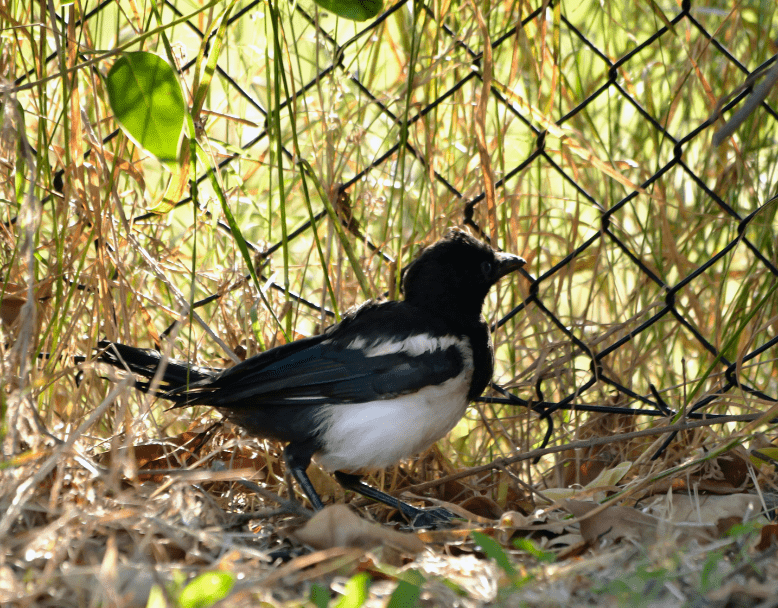It’s a beautiful day for birdwatching, and one species that always catches my eye is the magpie. These birds are known for their striking black and white plumage, as well as their intelligence and social behavior. But one question that often comes up when observing magpies is, “what is a group of magpies called?” The answer, my friends, is a charm is what you call a group of magpies.

The Origins of the Term "Charm"
The term “charm” may seem an odd choice for describing a group of magpies, but it has its roots in centuries of folklore and legend. In medieval times, magpies were associated with witchcraft and magic, and it was believed that a group of magpies had the power to bring good luck or ward off evil spirits. The term “charm” came to be used to describe any group of animals believed to possess magical or supernatural qualities, and thus the collective noun for magpies was born.
Other Collective Nouns for Magpies
While “charm” is the most common collective noun used to describe a group of magpies, there are several other terms that have been used over the years. Here are fifteen other collective nouns used to describe groups of magpies:
- Murder
- Gulp
- Tiding
- Concourse
- Tittering
- Band
- Horde
- Chattering
- Mischief
- Parliament
- Tangle
- Kazoo
- Tribe
- Mob
- Flock
Each of these collective nouns has its own unique history and connotations. “Murder,” for example, comes from the belief that magpies have a tendency to attack and kill other birds. “Chattering” and “tittering” refer to the birds’ distinctive vocalizations, while “parliament” and “tribe” allude to their reputation for being highly social and intelligent creatures.
Whether you prefer “charm,” “murder,” or one of the many other collective nouns used to describe magpies, there’s no denying that these birds are a fascinating and captivating species that has captured the hearts and imaginations of humans for centuries.
What is a Group of Baby Magpies Called?
While we know that a group of adult magpies is called a charm, what about baby magpies? Is there a specific term for a group of these young birds? The answer is no, there is no collective noun specifically for baby magpies. However, it’s interesting to note that baby magpies are highly social creatures, just like their parents. They stay with their parents for up to three months after hatching, and during this time they form close bonds with their siblings and other young magpies in the area.

Do Magpies Migrate?
Another interesting question to consider when thinking about magpies is whether or not they migrate. The answer, as with many questions in the natural world, is “it depends.” Some species of magpies, such as the black-billed magpie and the yellow-billed magpie, are non-migratory and live year-round in their home range. Other species, such as the Eurasian magpie and the Korean magpie, are known to undertake seasonal migrations to find food and breeding opportunities.
The Reasons for Migration
For migratory magpie species, there are several factors that influence their movements. One of the main reasons for migration is food availability. Magpies are omnivores, and they feed on a variety of foods including insects, fruit, seeds, and small animals. In the winter months, when food is scarce, magpies may migrate to more favorable areas where they can find sustenance. Additionally, some migratory magpies undertake their journey in order to breed. They may travel long distances to find mates and suitable nesting sites.

Facts about Magpies
Magpies are fascinating birds that have captured the imagination of humans for centuries. Here are a few interesting facts about magpies that you might not know:
- Magpies are highly intelligent birds and have been shown to possess remarkable problem-solving abilities.
- Magpies are known for their vocalizations, which include a variety of calls, chatters, and squawks.
- Magpies are opportunistic feeders and will eat just about anything, including small animals like rodents and insects, as well as carrion and even garbage.
- Magpies are notorious for their habit of collecting shiny objects. While it’s unclear why they do this, some scientists believe that it may be related to their interest in novel or interesting items.
- Magpies are also known for their nesting habits. They build large, dome-shaped nests out of twigs and sticks, which they line with softer materials like grass and fur. These nests can be up to three feet wide and two feet deep, and are often used for multiple years.
- In many cultures, magpies are associated with good luck or fortune. In Chinese mythology, for example, magpies are seen as symbols of happiness and good fortune.
The Significance of Magpies
The collective noun for magpies is just one small aspect of these fascinating birds. They have played an important role in human cultures throughout history, appearing in art, literature, and mythology. Their striking appearance and intelligent behavior make them a favorite of birdwatchers and nature enthusiasts, and their role in the ecosystem is an important one. So next time you see a group of magpies gathered together, remember that you’re witnessing not just a charm, but a species that has captured the hearts and imaginations of humans for centuries.
Conlcusion
As we’ve seen, a group of magpies is known as a “charm,” a term that has its roots in centuries of folklore and legend. However, over the years, other collective nouns have been used to describe groups of magpies, each with its own unique history and connotations. From “murder” to “tangle,” these terms speak to the enduring fascination that magpies hold for humans.
Whether you’re a birdwatcher, nature enthusiast, or simply someone who appreciates the beauty of the natural world, there’s no denying the charm of magpies. These striking birds are known for their intelligence, social behavior, and distinctive appearance. They have played an important role in human cultures throughout history, appearing in art, literature, and mythology.
But beyond their cultural significance, magpies are an important part of the ecosystem. They are opportunistic feeders that play a role in controlling populations of insects and rodents. They build large, intricate nests that can be used for multiple years. And they are a common sight in many parts of the world, bringing a touch of wildness and beauty to even the most urban of environments.
So the next time you see a group of magpies gathered together, remember that you’re witnessing not just a charm, but a species that has captured the hearts and imaginations of humans for centuries. And whether you refer to them as a “charm,” a “murder,” or any of the other collective nouns that have been used to describe them over the years, there’s no denying the magic and wonder of these beautiful birds. Happy birding!

James has always been an avid outdoorsman. Since a kid, he kept a journal of all the different birds and species he saw. Now he wants to share his passion with other birders with Happy Birding!
